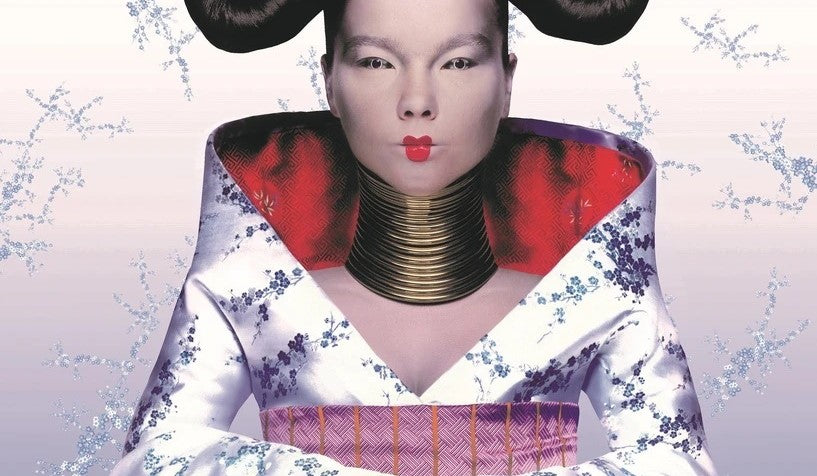
Image: Album cover for Homogenic when Björk collaborated with designer Alexander McQueen, photographer Nick Knight. Image © Nick Knight © Alexander McQueen. Courtesy of One Little Indian Records.
The V&A is open again and has extended the run of Kimono: Kyoto to Catwalk until 25 October 2020. Part of its phased reopening, tickets will be available to book soon. To celebrate, we post an extract from Professor Clare Johnston’s review of the exhibition from Issue 94: Earth. This exhibition is the story and a celebration of ‘Kimono’, which literally translated means ‘A thing to wear’ which, considering the scale and extraordinary content of this exhibition featuring Kimono for Samurai and Geisha, costumes from Star wars and catwalk pieces from Galliano for Dior, seems something of an understatement. Curator Anna Jackson is keen to emphasise that while the aim is to understand and appreciate the story and beauty of the Kimono, it is also important to challenge traditional perceptions; that the Kimono is timeless and unchanging, and show its true significance and dynamic influence on fashion and costume for over 1000 years, and how it has continued to inspire designers.

Image: Kimono Times, Akira Times, 2017. © Akira Times
Introducing the visitor to the history of the Kimono, the exhibition starts with rooms divided by hanging fabric, which give the scale and feeling of traditional shops and cafes in Japan. There is an exquisite array of historical artefacts, and garments made of the most sumptuous textiles recalling the start of 16th Century Japan, the beginning of the Edo-period, when apparently everyone in Japan wore a Kimono, regardless of gender or status. The traditional Kimono (Kosode) is essentially a simple straight seamed garment, with an Obi (sash) which ignores body shape but provides the flat fabric surface to show off; colour, pattern, technique, all aspects which convey the important messages of status and taste.

Image: Kimono Times, Akira Times, 2017. © Akira Times
The show culminates with a large and diverse collection of modern Kimonos including a plethora of Kimono influenced Fashion. These exhibits are set in a stark white setting interspersed with Bonsai trees, as if in a garden, and show the evolution of the Kimono since the 1950s including many examples demonstrating its influence on fashion, textiles and costume for performance. There are many instances showing the influence of the Kimono silhouette in volume and layering such as the Alexander McQueen Kimono worn by Björk and the Chee-Shie-San ensemble John Galliano created for Dior in 2007. Throughout the show there is a strong visual message seen through the relationship of the textile to the garment. We see an incredible diversity and richness of woven, embroidered, printed, shibouri, and hand-painted textiles which lend individuality and character to the garments. Considerable attention is given to the innovation and development of both hand and manufactured cloth alongside the history and evolution of the garment, with relevant information on the identity of the fabric and techniques used. This exhibition is a feast for the eyes, as well as enjoyable and enlightening.
For more information visit www.vam.ac.uk


1 comment
I am intrigued with the idea that the kimono is timeless- lasting a thousand years. This idea of an art, a style, a “fashion” being timeless is so counter to the modern way of thinking – change is inevitable, change is good, change is necessary. I found the idea of timelessness to be powerful and captivating.